Submitted by WA Contents
Steven Holl Architects completes Nancy and Rich Kinder Museum in Houston
United States Architecture News - Nov 18, 2020 - 11:31 13821 views
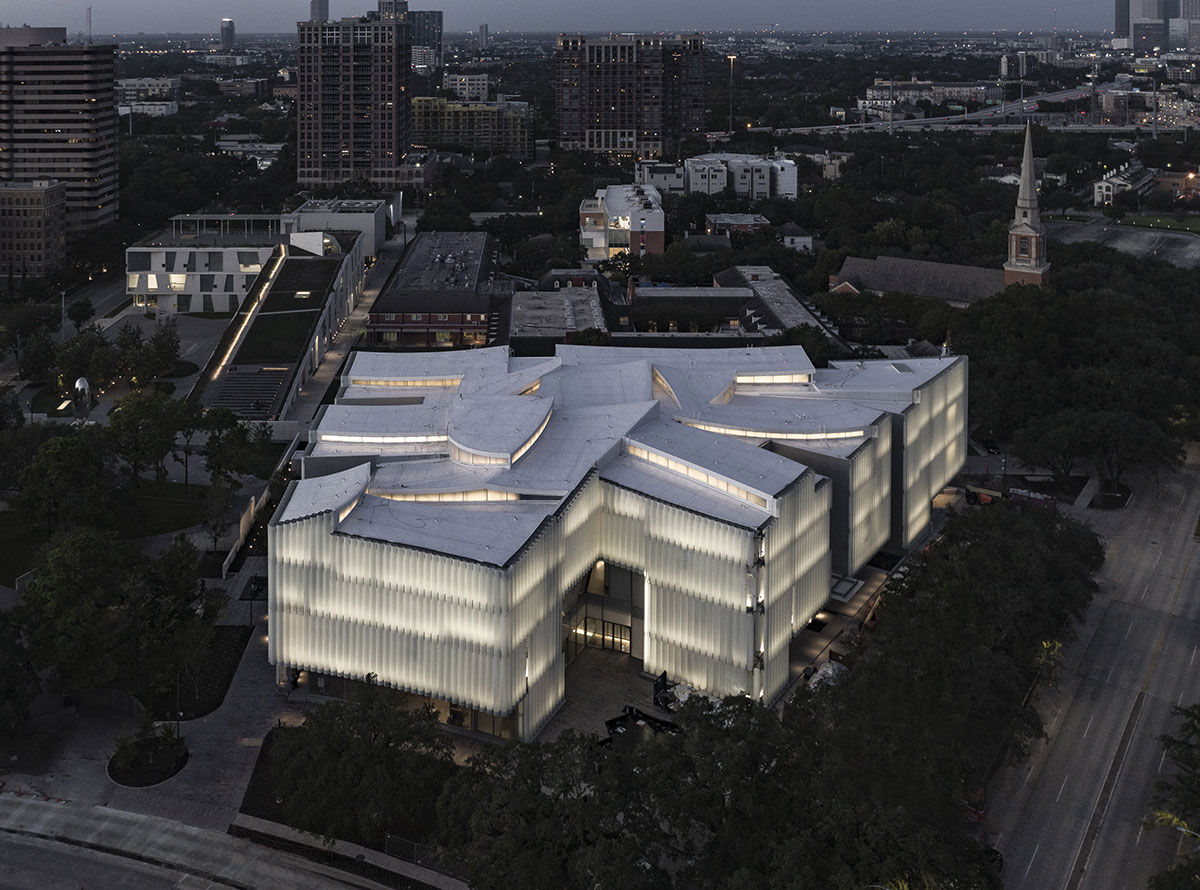
Steven Holl Architects has completed the Nancy and Rich Kinder Building at the Museum of Fine Arts in Houston (MFA), Texas.
The new building, covering a total of the 237,000-square-foot (22,018-square-metre) has officially opened to the public at the campus, after the decade-long expansion and enhancement of the Museum’s Susan and Fayes S. Sarofim Campus.
The Nancy and Rich Kinder Building's program contains: museum addition with exhibition space, galleries, seven garden courtyards, 215-seat theater, two pedestrian tunnels, parking arrival hall, conference, rooms, restaurant overlooking sculpture garden, cafe, and a triple-story forum.
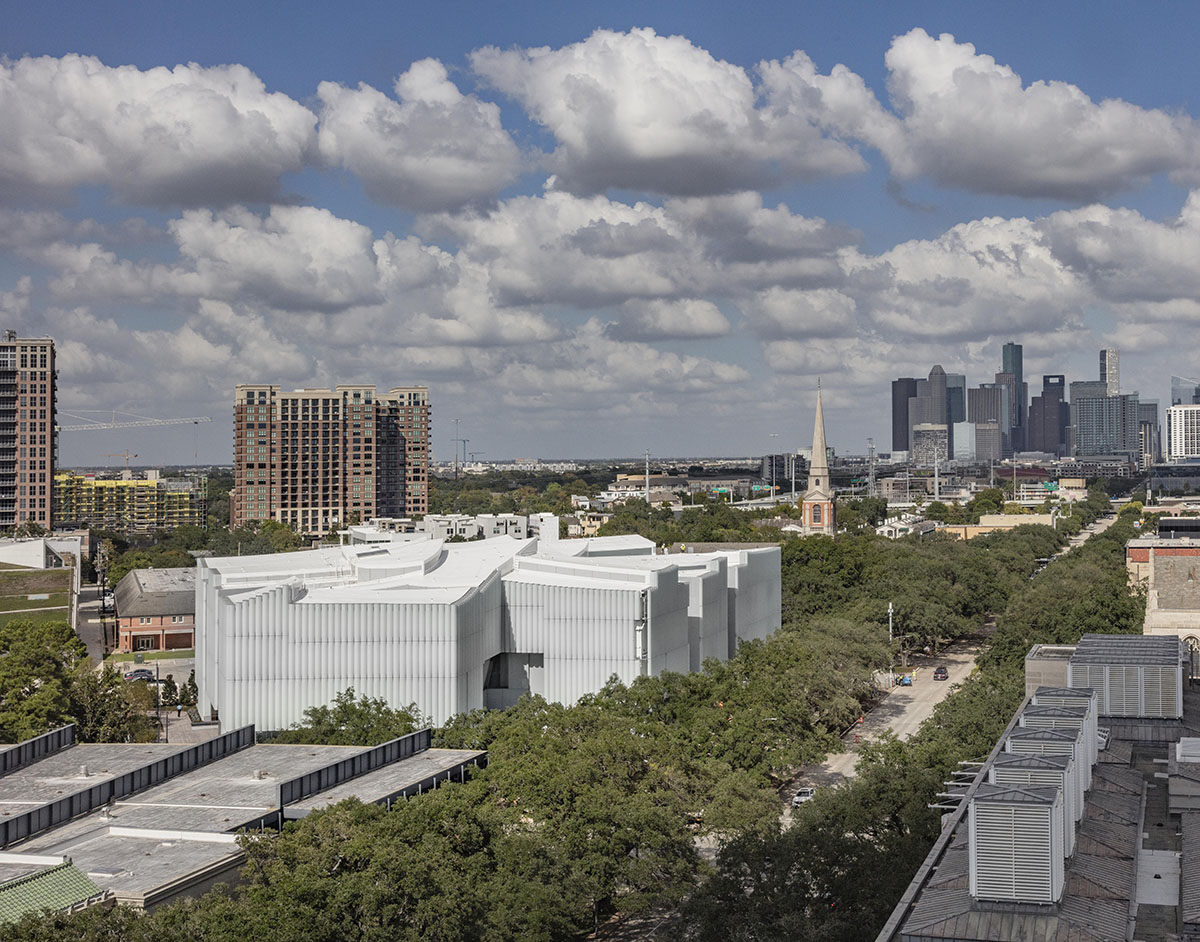
The Nancy and Rich Kinder Building at the Museum of Fine Arts, Houston, from above.
The campus redevelopment, led by Steven Holl Architects, is the largest new North American cultural project. Steven Holl Architects used sliced curved walls and concave opening to take light across each distinct gallery spaces.
The Nancy and Rich Kinder Building was completed as part of a masterplan for the Museum of Fine Arts, Houston. Steven Holl Architects worked with the multidisciplinary team for the expansion, shaping an integral experience with new landscapes and public plazas.
In the center of Houston, the new master plan knits together adjacent historic elements, including a 1924 historic church, a Mies van der Rohe building, and an Isamu Noguchi sculpture garden. The Nancy and Rich Kinder Building is the third gallery building of the MFAH.
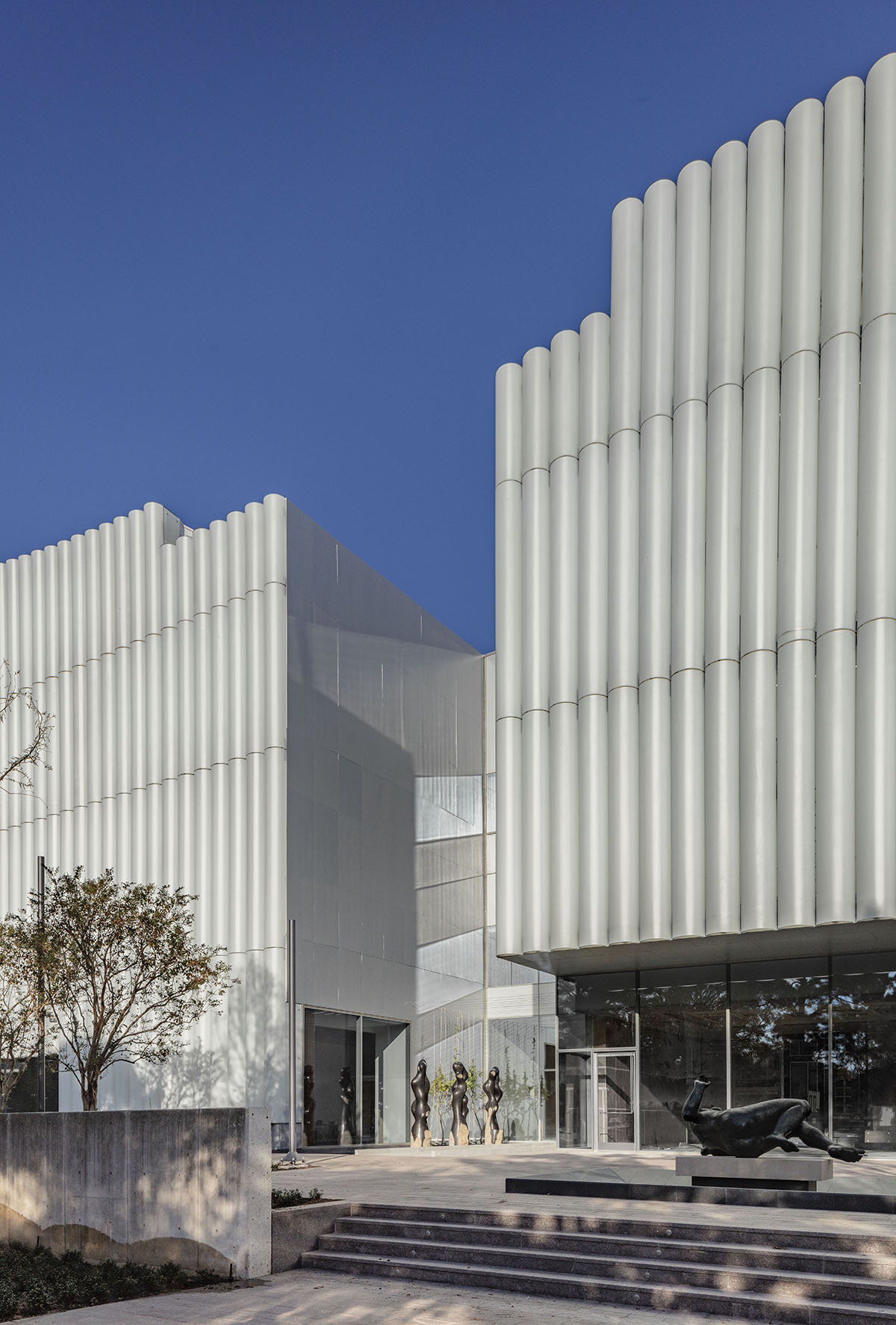
The Nancy and Rich Kinder Building at the Museum of Fine Arts, Houston, west facade.
The Nancy and Rich Kinder Building houses the collections of modern and contemporary art, drawn from the collections of Latin American and Latino art, photography, prints and drawings; decorative arts, craft and design; and modern and contemporary art.
The Kinder Building is characterized by porosity, opening the ground floor at all elevations. Seven gardens slice the perimeter, marking points of entry and punctuating the elevations.
The largest garden court, at the corner of Bissonnet and Main Street, marks a central entry point on the new Museum of Fine Arts, Houston campus.
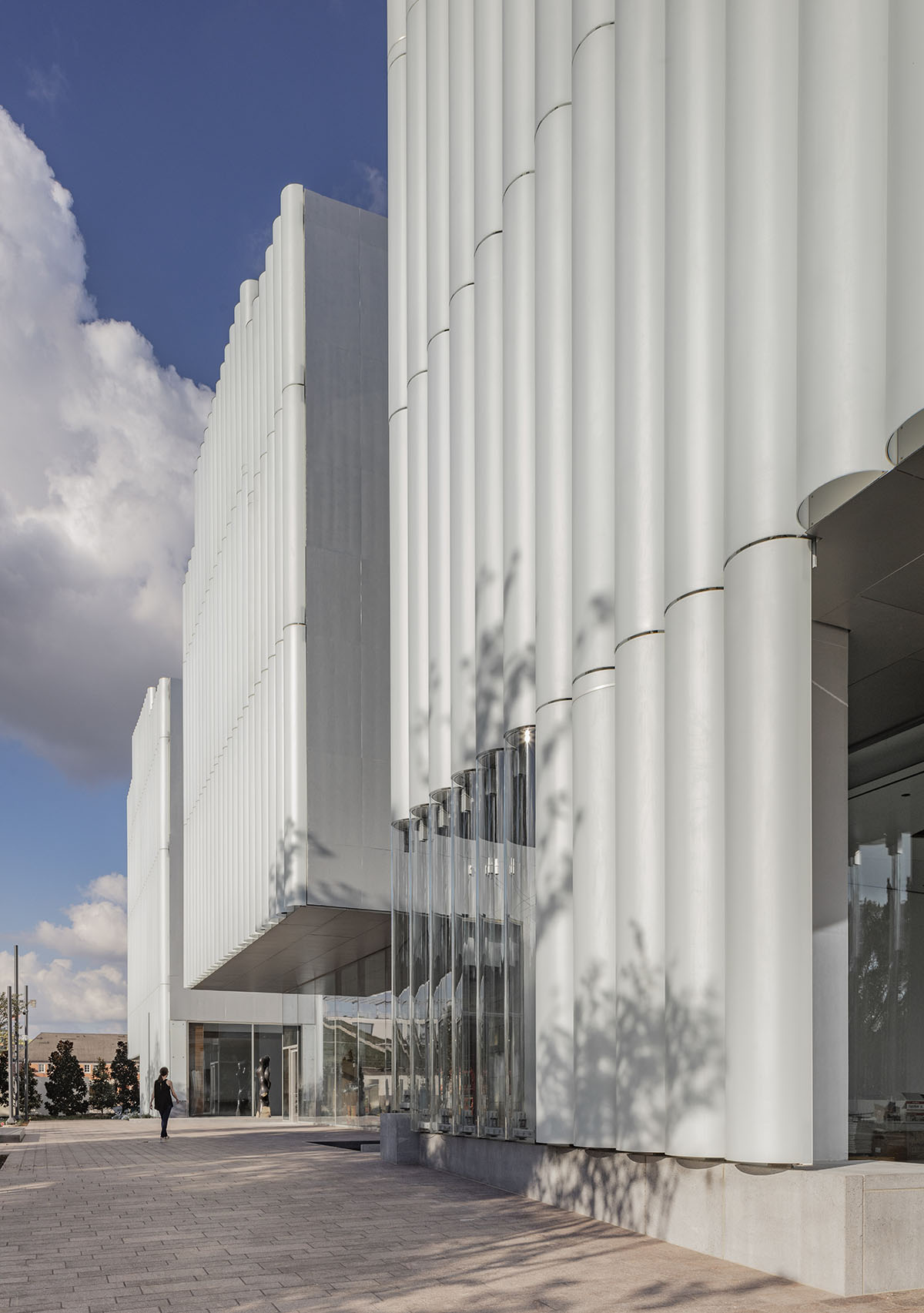
The Nancy and Rich Kinder Building at the Museum of Fine Arts, Houston, west facade.
When standing in the new entrance lobby of the Kinder Building, one can see gardens and lush Houston vegetation in four directions and feel the inviting energy of a new sense of openness to the community.
The Texas sky opens 180°overhead above a luminous canopy covering the new building.
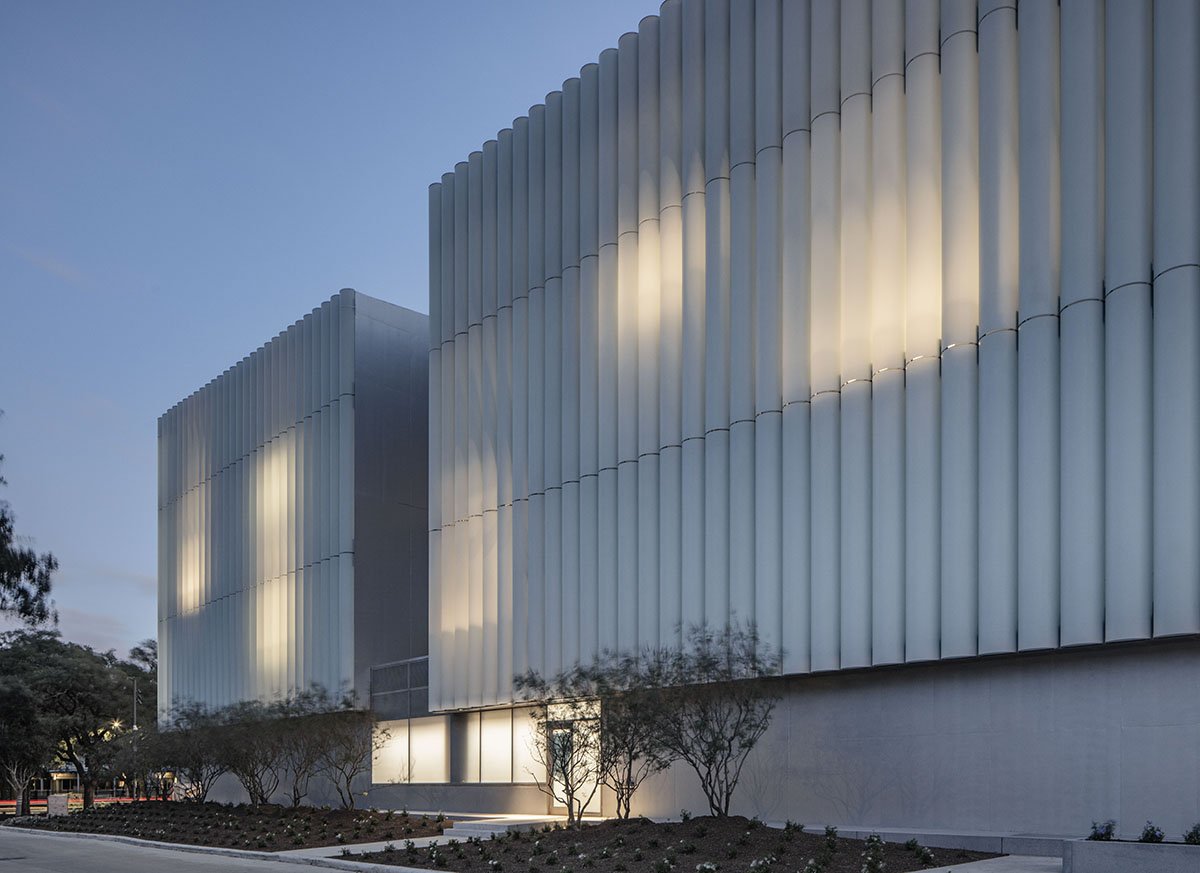
The Nancy and Rich Kinder Building at the Museum of Fine Arts, Houston, north facade.
"Concave curves, imagined from cloud circles, push down on the roof geometry, allowing natural light to slip in with precise measure and quality, perfect for top-lit galleries," said Steven Holl Architects.
"Organized horizontally on two levels, all galleries have natural light and are flexible with open flow."
The undersides of the curved ceiling become light reflectors, catching and sliding the light across each distinct gallery experience. These curved slices of light shape the gallery spaces in a unique way related to the organic qualities of the lush vegetation and water that characterize the new campus. Rather than mechanical and repetitive, the light is flowing, echoing the movement through the galleries.
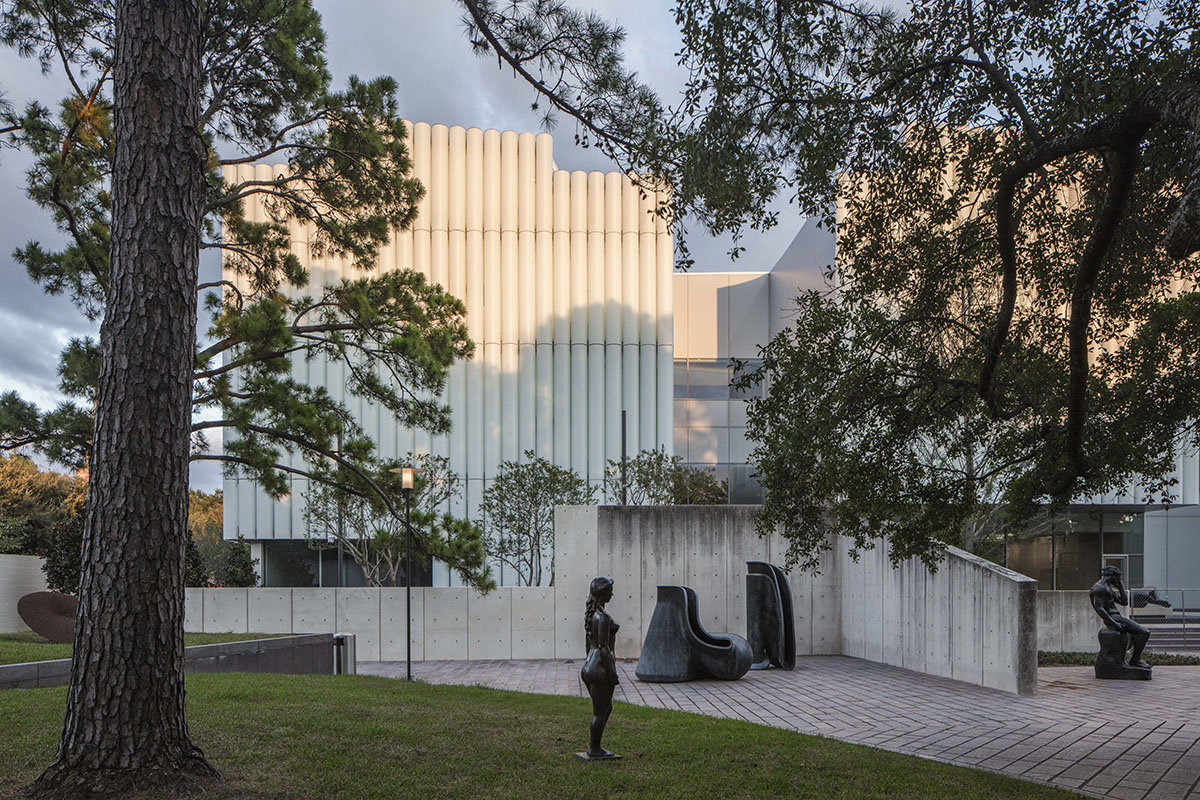
The Nancy and Rich Kinder Building as seen from the Museum of Fine Arts, Houston’s sculpture garden.
The open flow through galleries is punctuated by views into the seven gardens with green trellises offering shade from glare. The galleries are centered around an open forum. The central gallery atrium provides generous spaces for the exhibition of art and vertical circulation to the upper floors.
The Kinder Building adds a horizontal architecture in translucent glass to the museum’s collection of stone (1924), steel and glass (1958, 1974), and stone (2000) buildings.
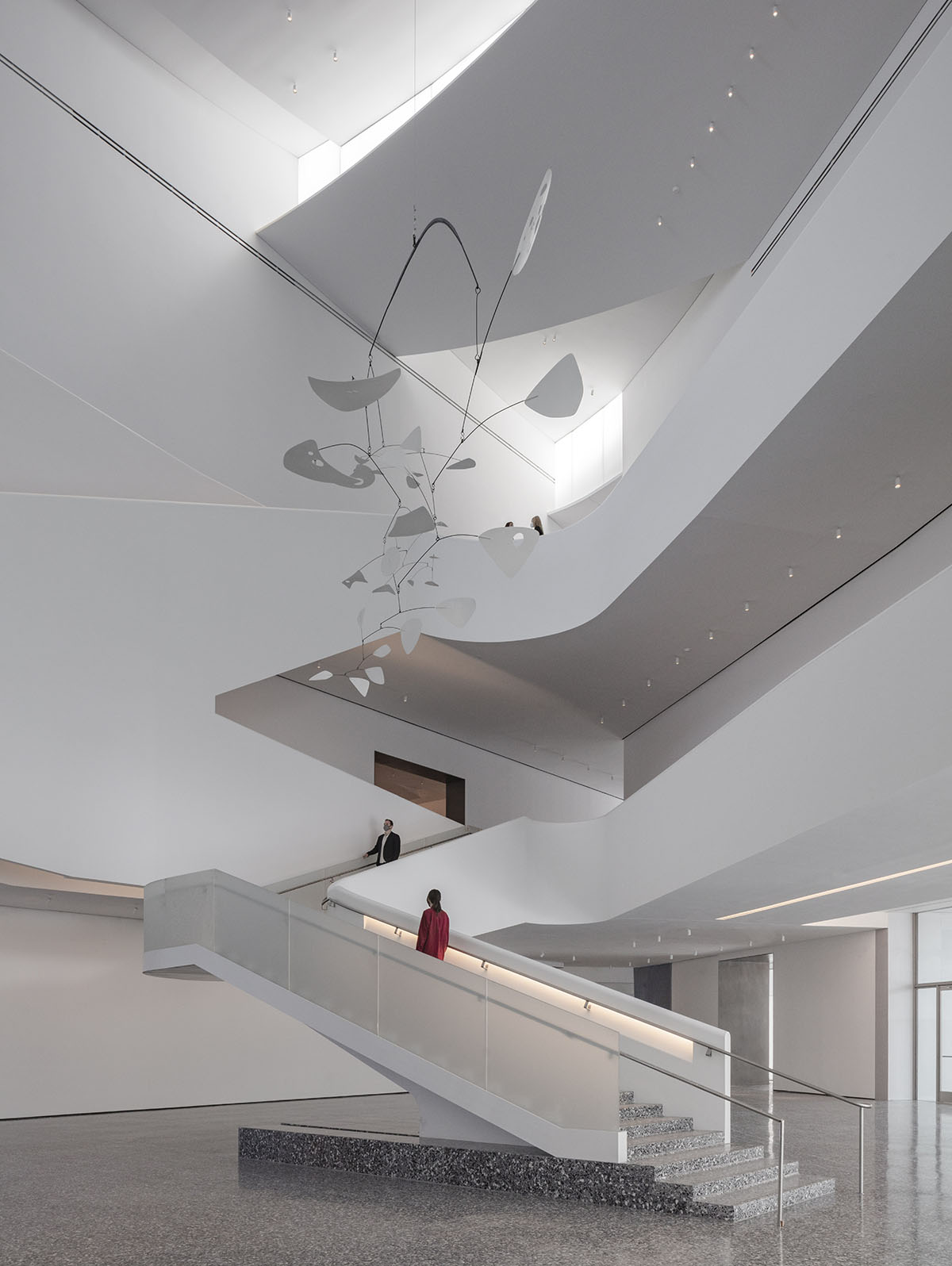
The Nancy and Rich Kinder Building at the Museum of Fine Arts, Houston, atrium.
Its innovative glass-tube facade has a soft, alabaster-like texture. The 30-inch tubes of glass open at the top and bottom, providing a "cold jacket" which reduces solar gain by 70% on the facades via the chimney effect of air circulation. At night, the glowing translucent facade is reflected in the water gardens and provides an open invitation to enter the museum.
As part of the master plan, Steven Holl Architects completed the new 93,000-square-foot (8,639-square-metre) Glassell School of Art in 2018.
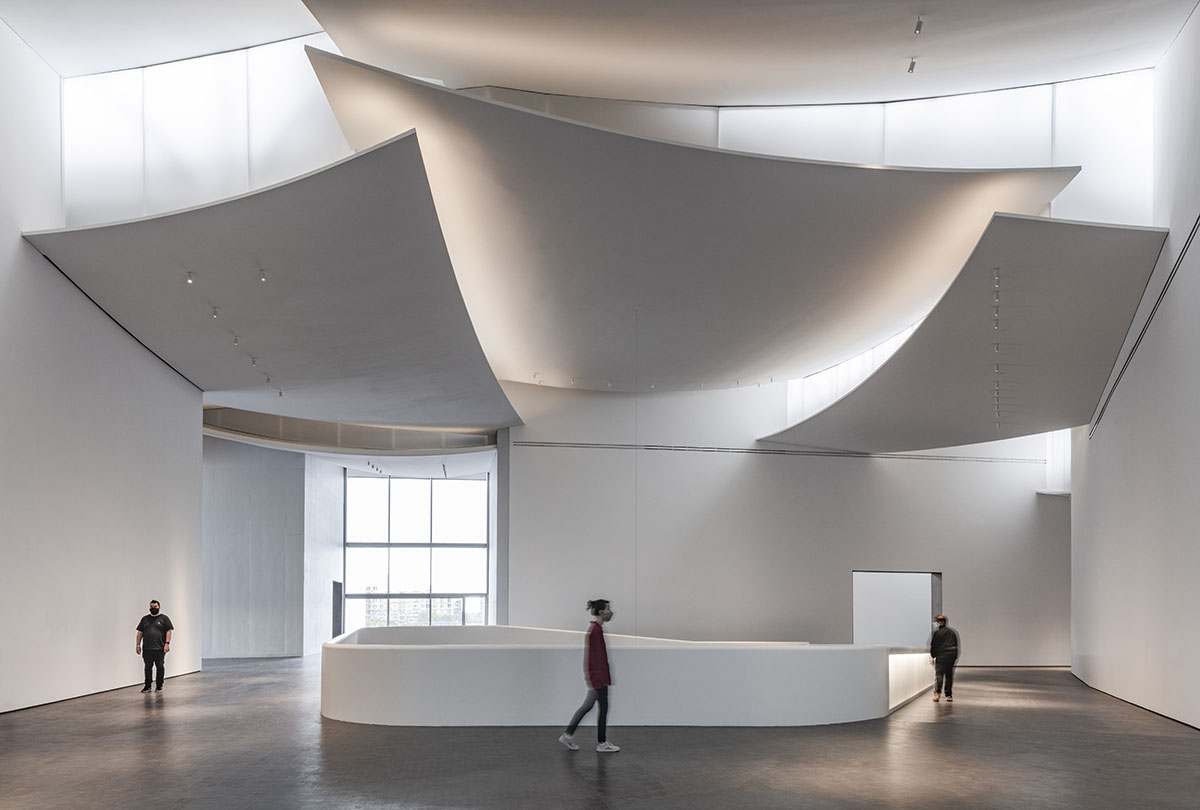
The Nancy and Rich Kinder Building at the Museum of Fine Arts, Houston, third-floor atrium.
Set adjacent to the Kinder Building, the L-shaped School creates an integral campus experience, defining the Brown Foundation Plaza which extends the space of the Cullen Sculpture Garden by Noguchi.
The precast planar structural concrete exterior begins with the angle of the inclined roof plane and gives character to the inner spaces of the building. The planes alternate with large translucent panels to provide diffuse light to the art studios within the building.
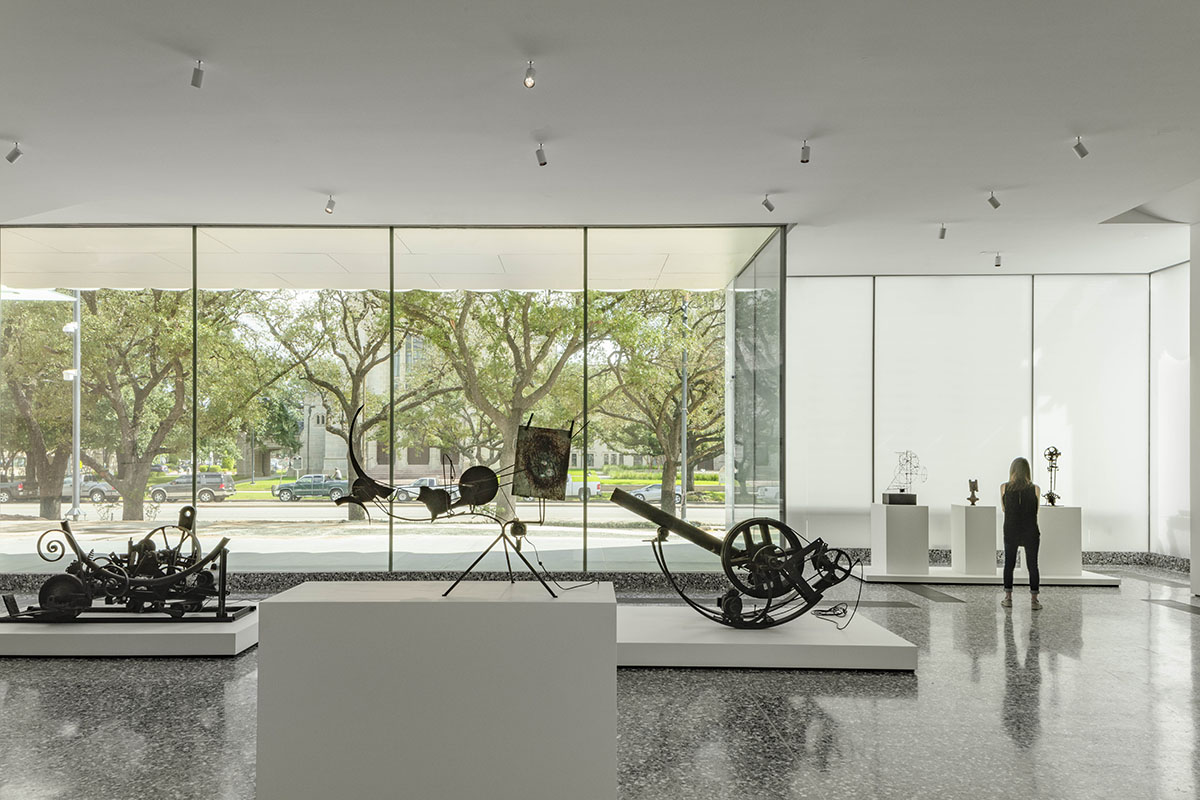
The Nancy and Rich Kinder Building at the Museum of Fine Arts, Houston, street-level gallery with works by Jean Tinguely.
"Nancy and I are overjoyed to see this wonderful building open its doors to the public in the heart of a beautifully expanded and landscaped campus," said Rich Kinder, founder of the Kinder Foundation.
"This opening means so much to us because we know what it means for the people of Houston, who make this institution their museum, day after day. We thank everyone who shares our deep belief in Houston and has worked to make this day a reality."

The galleries of the department of modern and contemporary art on the second floor of the Nancy and Rich Kinder Building at the Museum of Fine Arts, Houston.
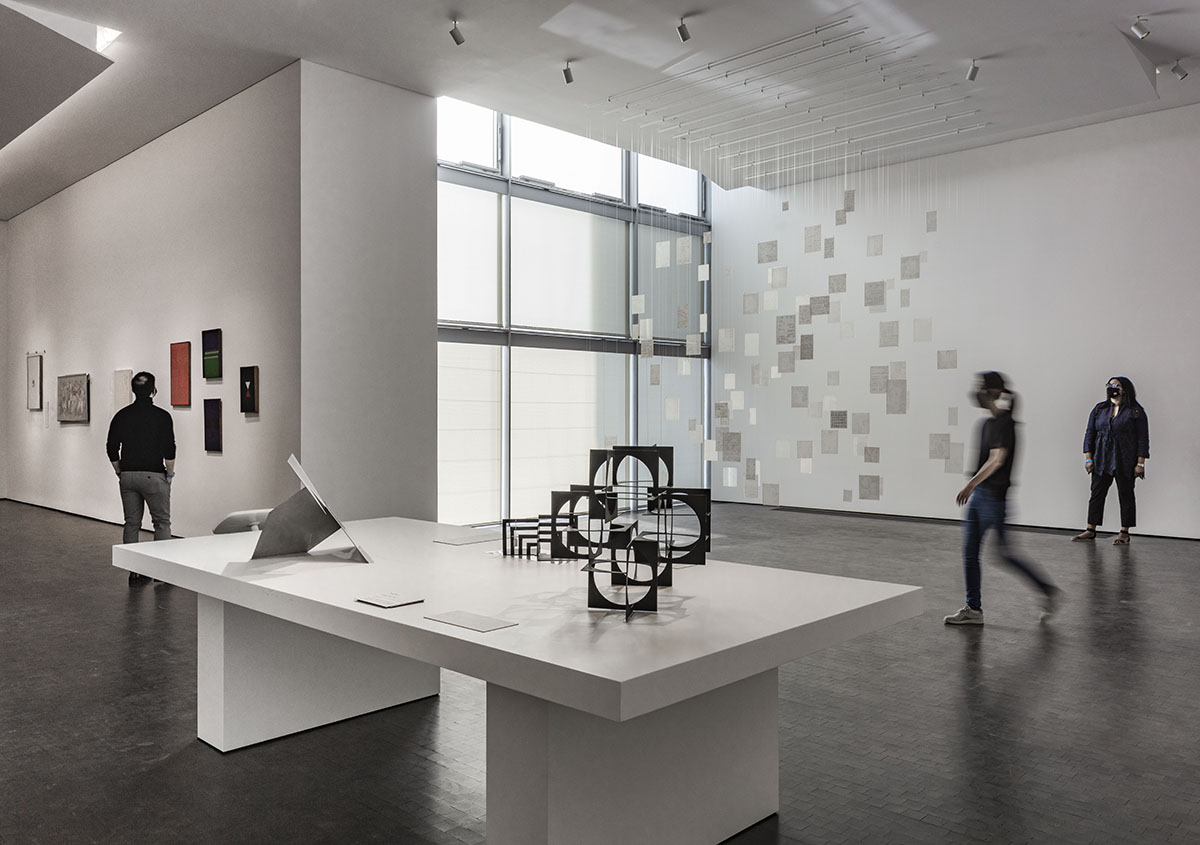
The Latin American department galleries in the new Nancy and Rich Kinder Building at the Museum of Fine Arts, Houston.
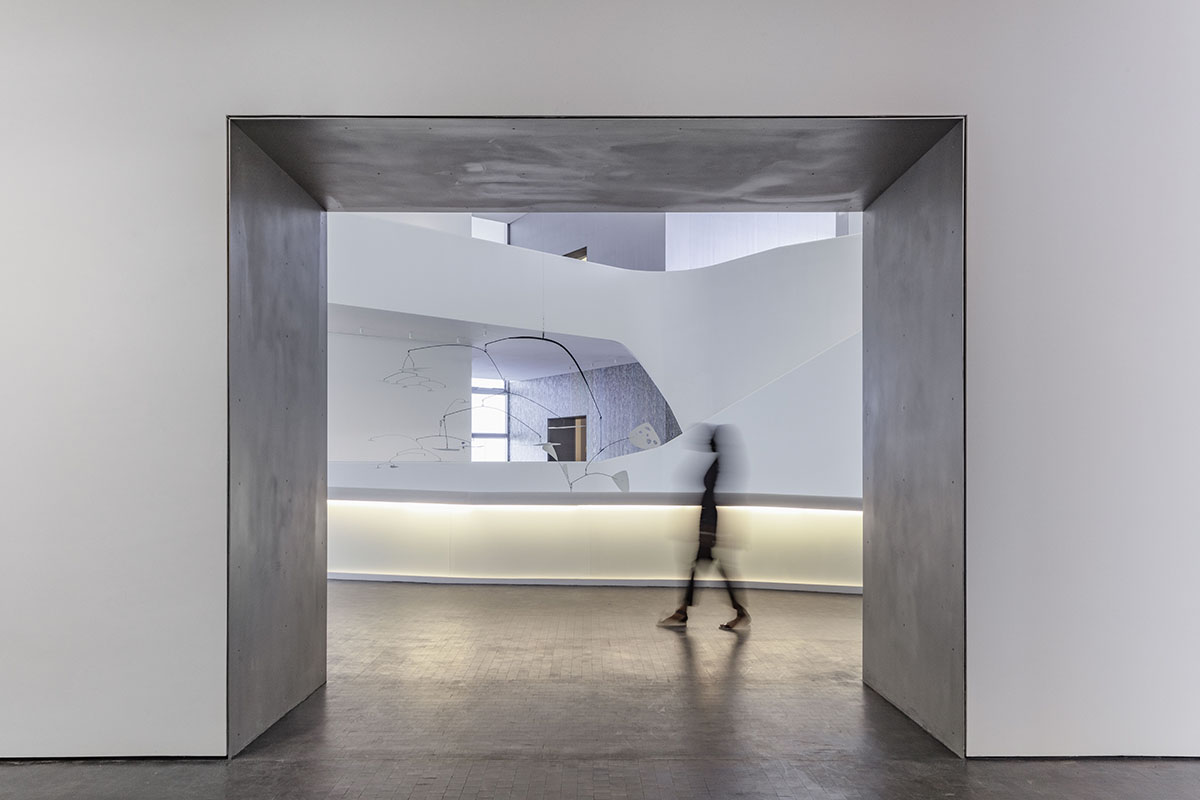
View of the atrium from a gallery in the new Nancy and Rich Kinder Building at the Museum of Fine Arts, Houston.
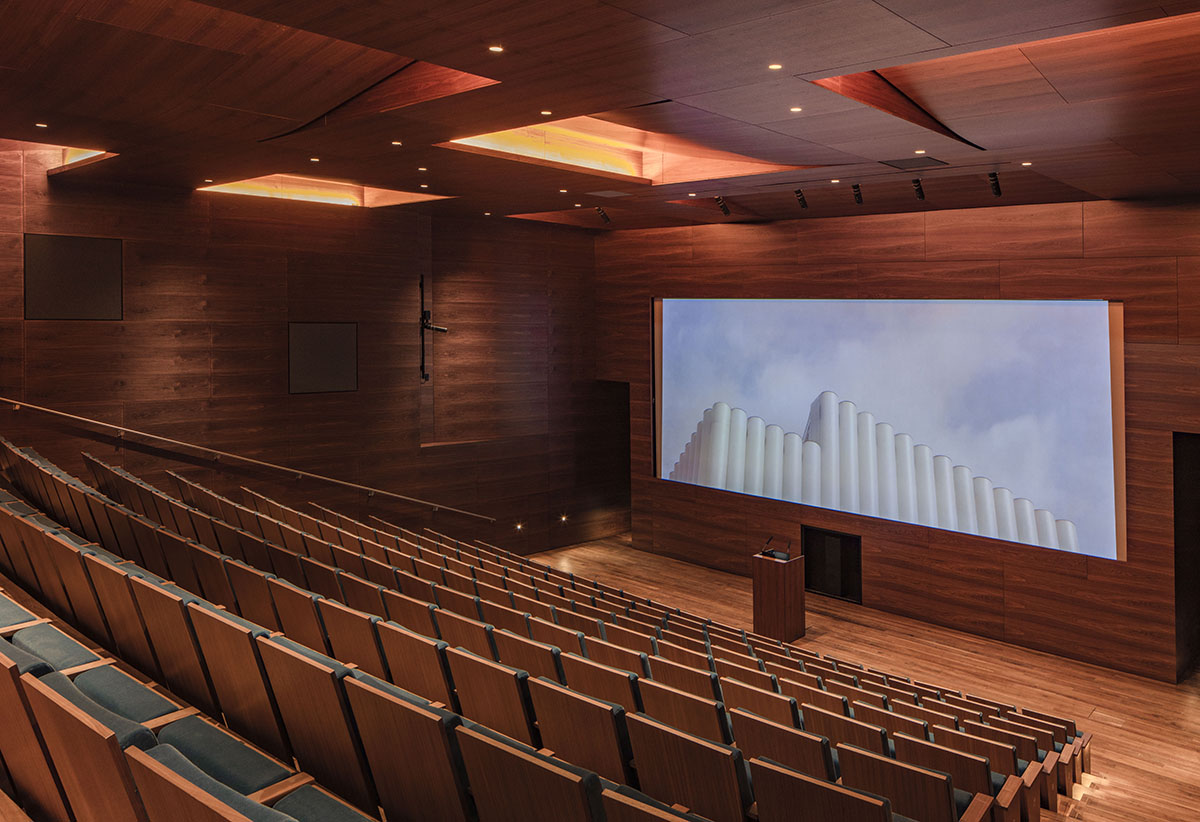
The Lynn Wyatt Theater on the lower level of the Nancy and Rich Kinder Building at the Museum of Fine Arts, Houston.
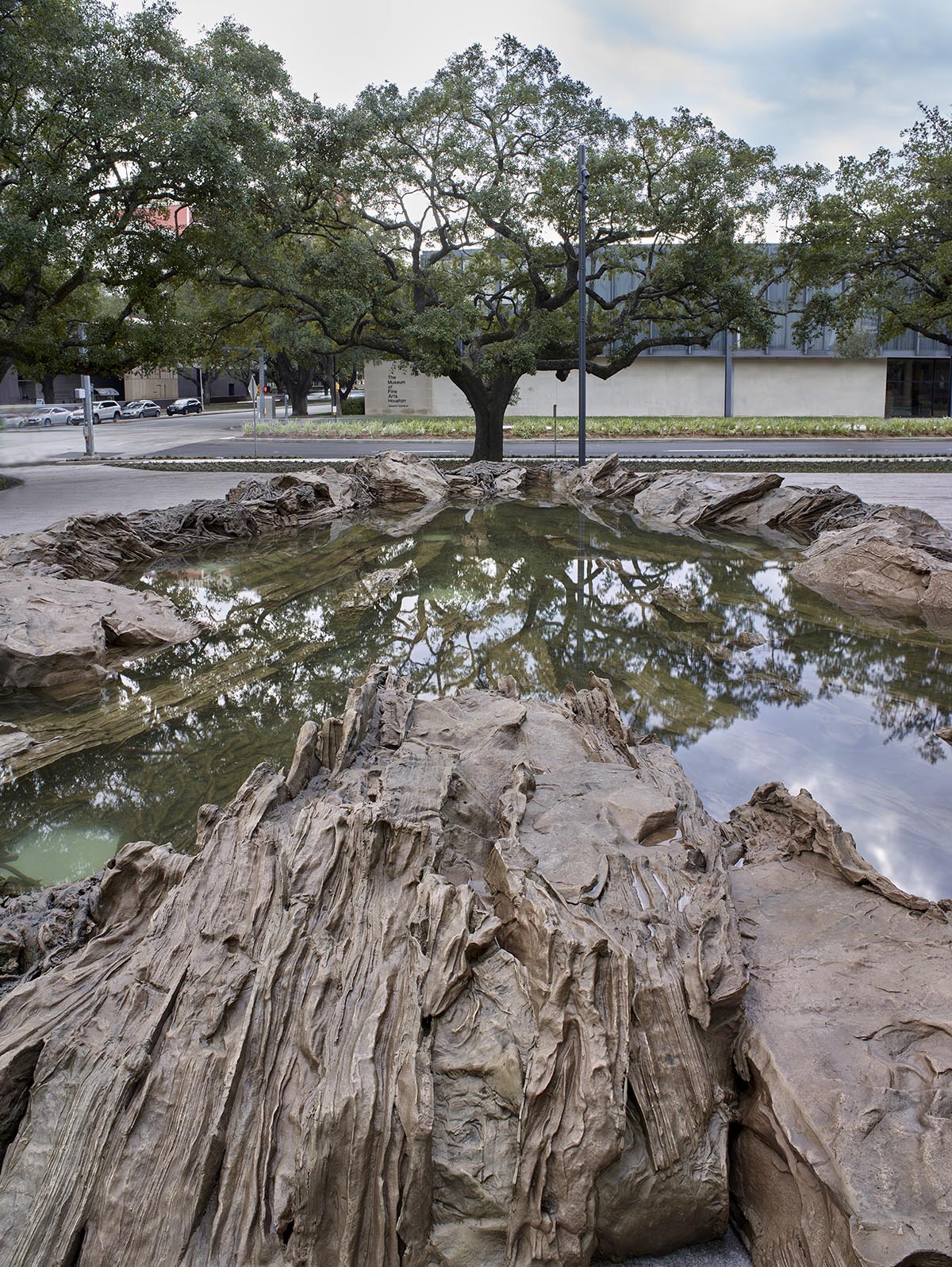
Installation view of Cristina Iglesias’s Inner Landscape (the lithosphere, the roots, the water), 2020. Photo by Thomas Dubrock, courtesy of the Museum of Fine Arts, Houston.
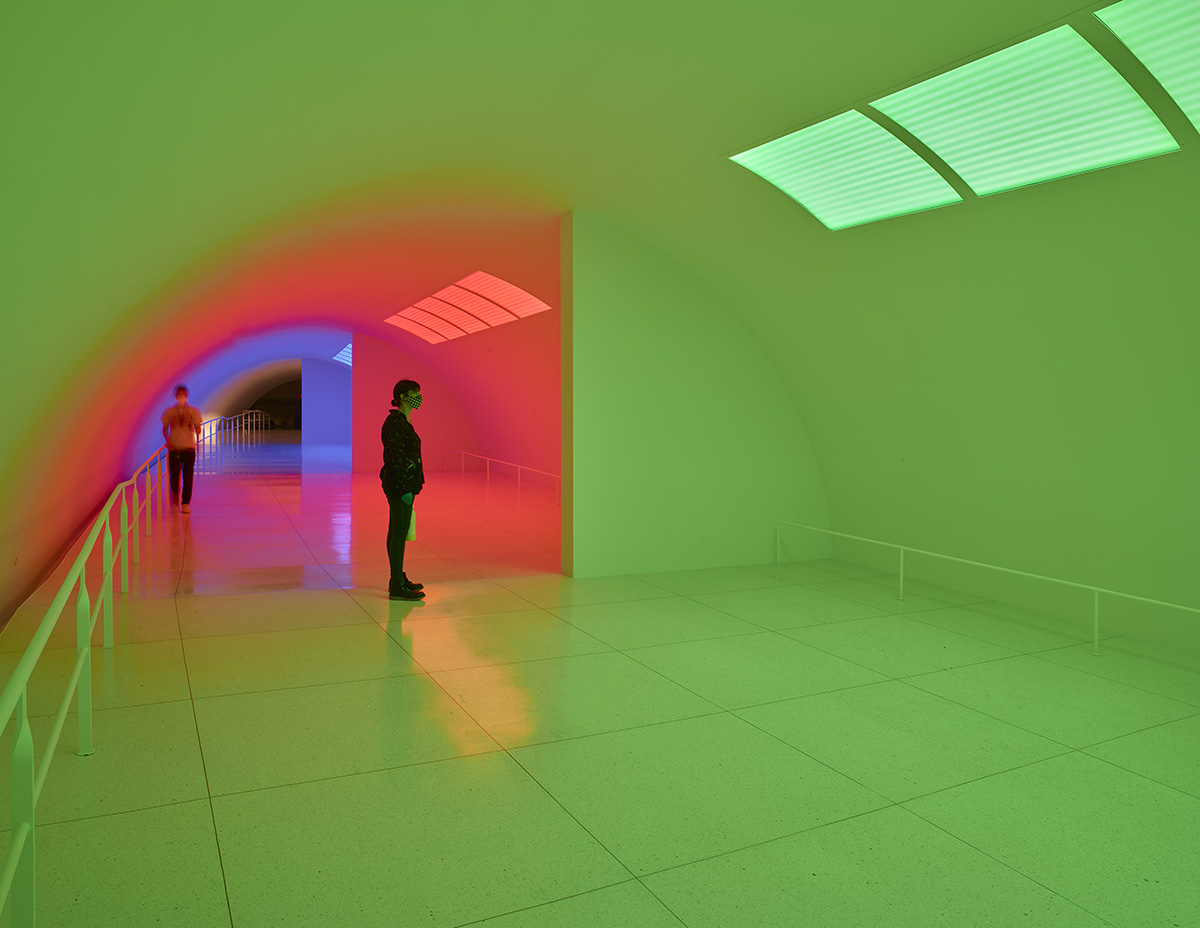
Installation view of Carlos Cruz-Diez’s Cromosaturación MFAH, Paris 1965 / Houston 2017. Photo by Thomas Dubrock, courtesy of the Museum of Fine Arts, Houston.
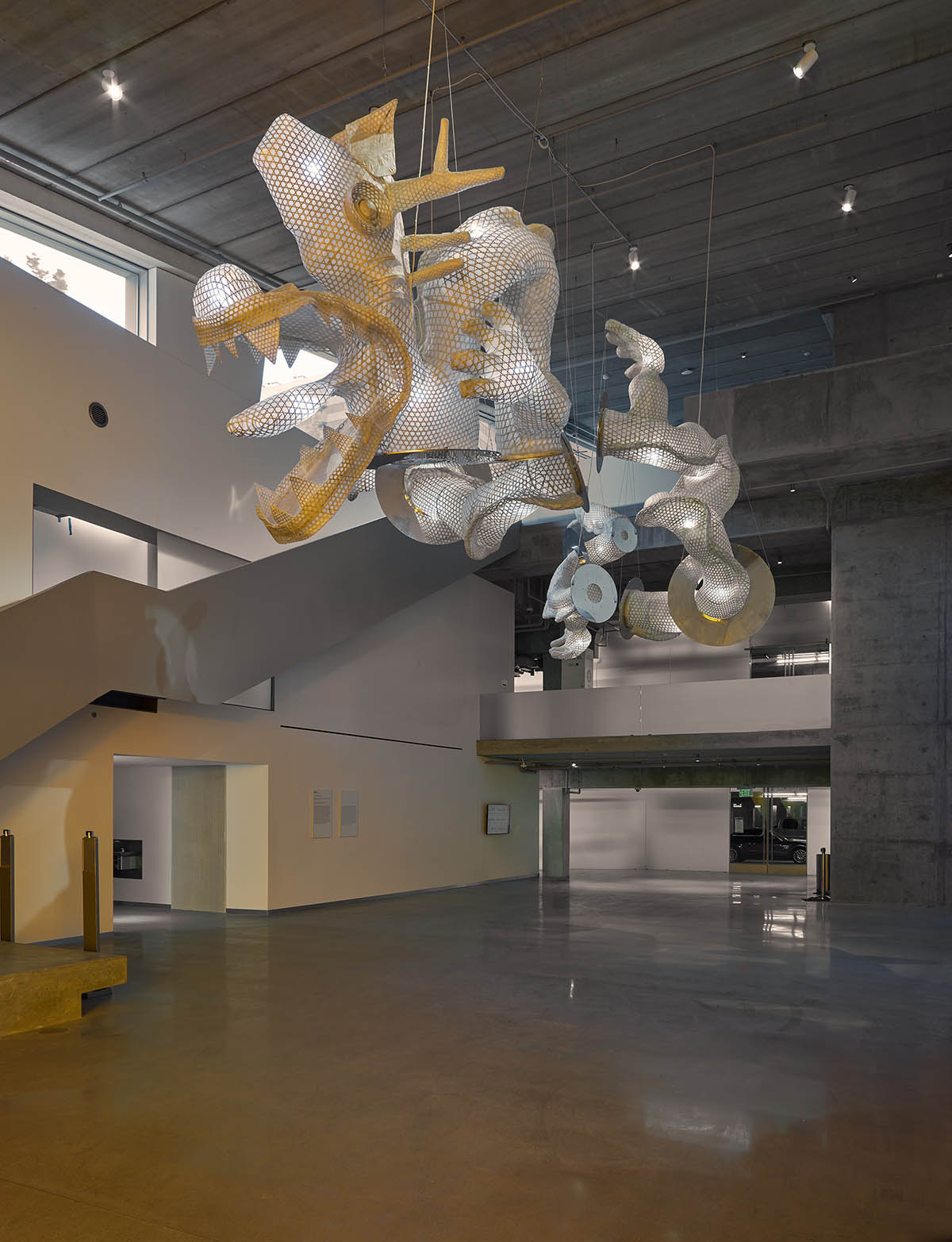
Installation view of Ai Weiwei’s Dragon Reflection, 2019-20. Photo by Thomas Dubrock, courtesy of the Museum of Fine Arts, Houston.
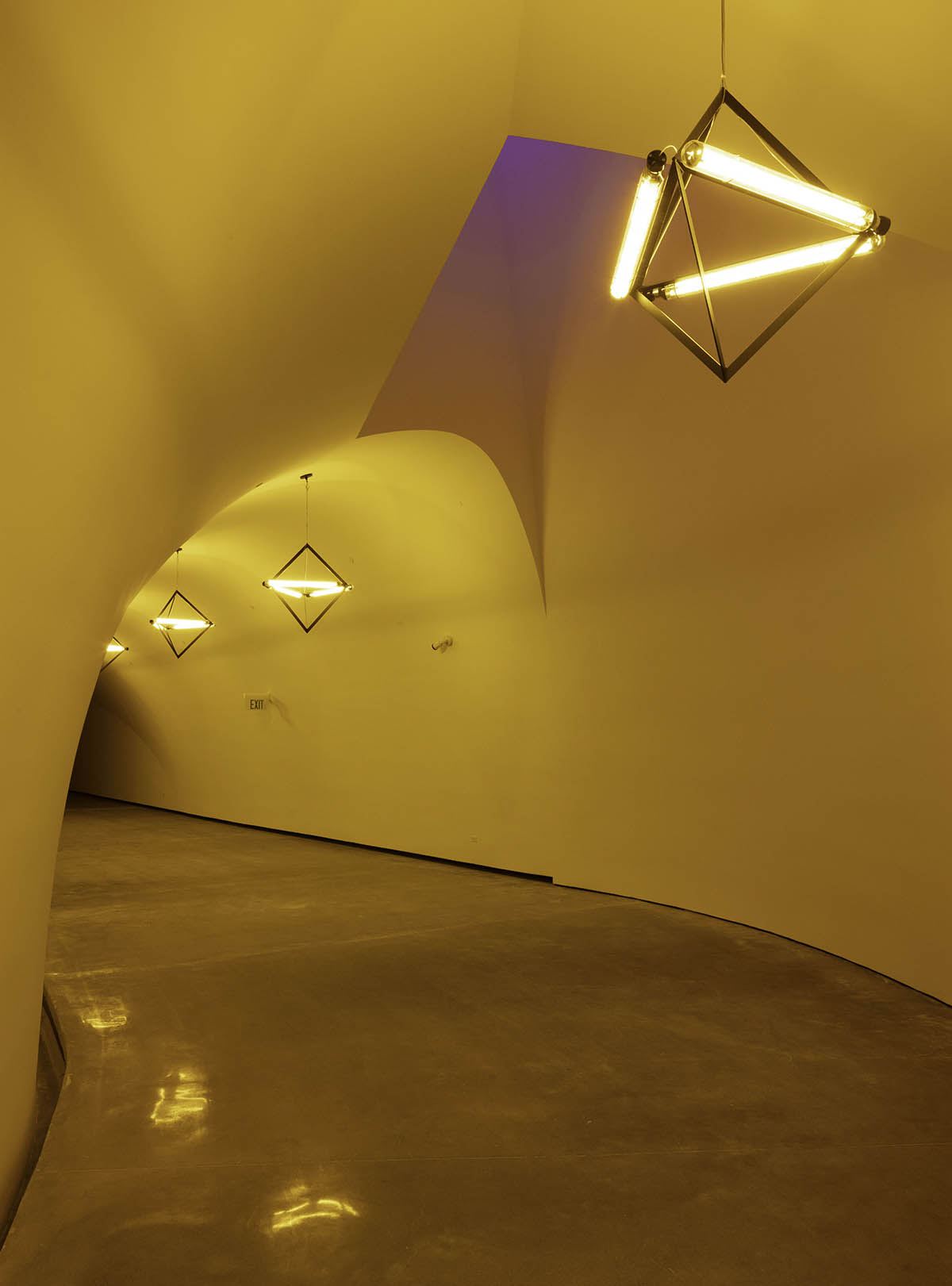
Installation view of Ólafur Elíasson’s Sometimes an underground movement is an illuminated bridge tunnel, 2020, in the Nancy and Rich Kinder Building at the Museum of Fine Arts, Houston.
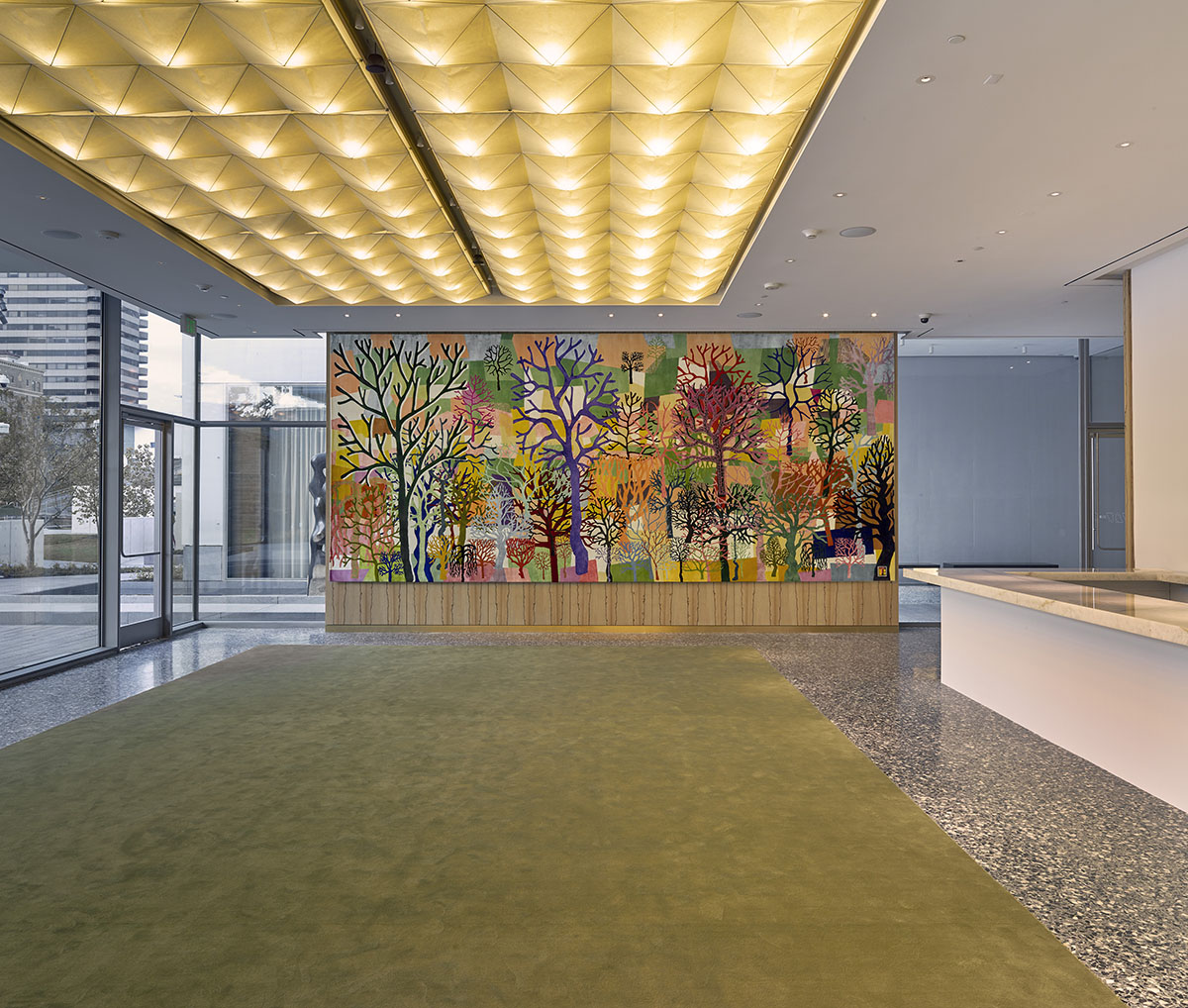
Installation view of Trenton Doyle Hancock’s Color Flash for Chat and Chew, Paris Texas in Seventy-Two, 2019–2020. Photo by Thomas Dubrock, courtesy of the Museum of Fine Arts, Houston.
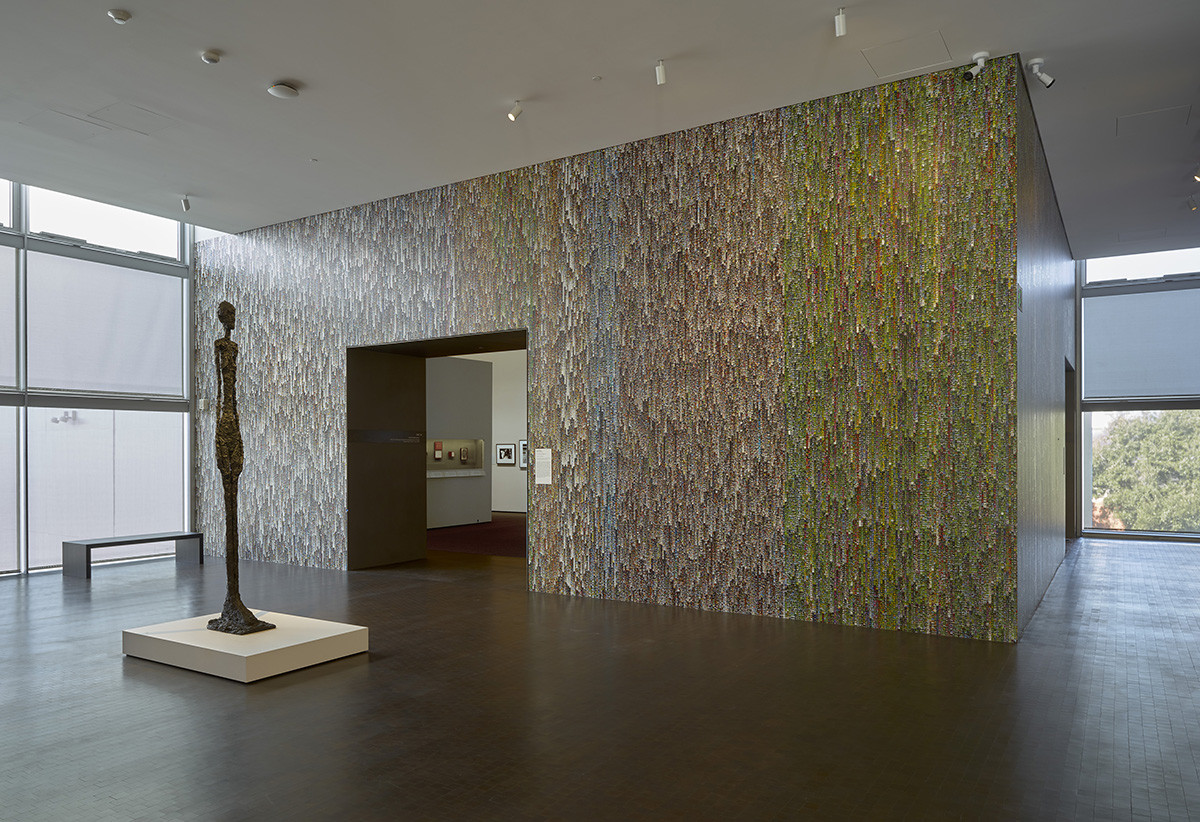
Installation view of Jason Salavon’s Little Infinity, 2020 with Alberto Giacometti’s Grande femme debout I (Large standing woman I), 1960 in the foreground. Photo by Thomas Dubrock, courtesy of the Museum of Fine Arts, Houston.
Project facts
Construction Period: August 2015 - November 2020
Building Area: 237,213 square feet
Site Area: part of 14.3-acre master plan
Program: Museum addition with exhibition space, galleries, seven garden courtyards, 215-seat theater, two pedestrian tunnels, parking arrival hall, conference, rooms, restaurant overlooking sculpture garden, cafe and a triple-story Forum.
Client: The Museum of Fine Arts, Houston
Architect:
Steven Holl Architects
Steven Holl (design architect, principal)
Chris McVoy (partner in charge)
Olaf Schmidt (senior associate, overall project architect)
Filipe Taboada (associate, project architect for Kinder Building)
Rychiee Espinosa, Yiqing Zhao, Lourenzo Amaro de Oliveira, Garrick
Ambrose, Xi Chen, Carolina Cohen Freue, JongSeo Lee, Vahe Markosian,
Elise Riley, Christopher Rotman, Yun Shi, Alfonso Simelio, Dimitra
Tsachrelia, Yasmin Vobis (project team)
Associate architects: Kendall/Heaton Associates
Project manager: Legends
Structural engineers: Guy Nordenson & Associates, Cardno
MEP engineers: ICOR Associates
Climate engineers: Transsolar
Façade consultants: Knippers Helbig
Lighting consultant: L’Observatoire International
Cost estimator: Venue Cost Consultants
All images © Richard Barnes, courtesy of the Museum of Fine Arts, Houston unless otherwise stated.
> via Steven Holl Architects
